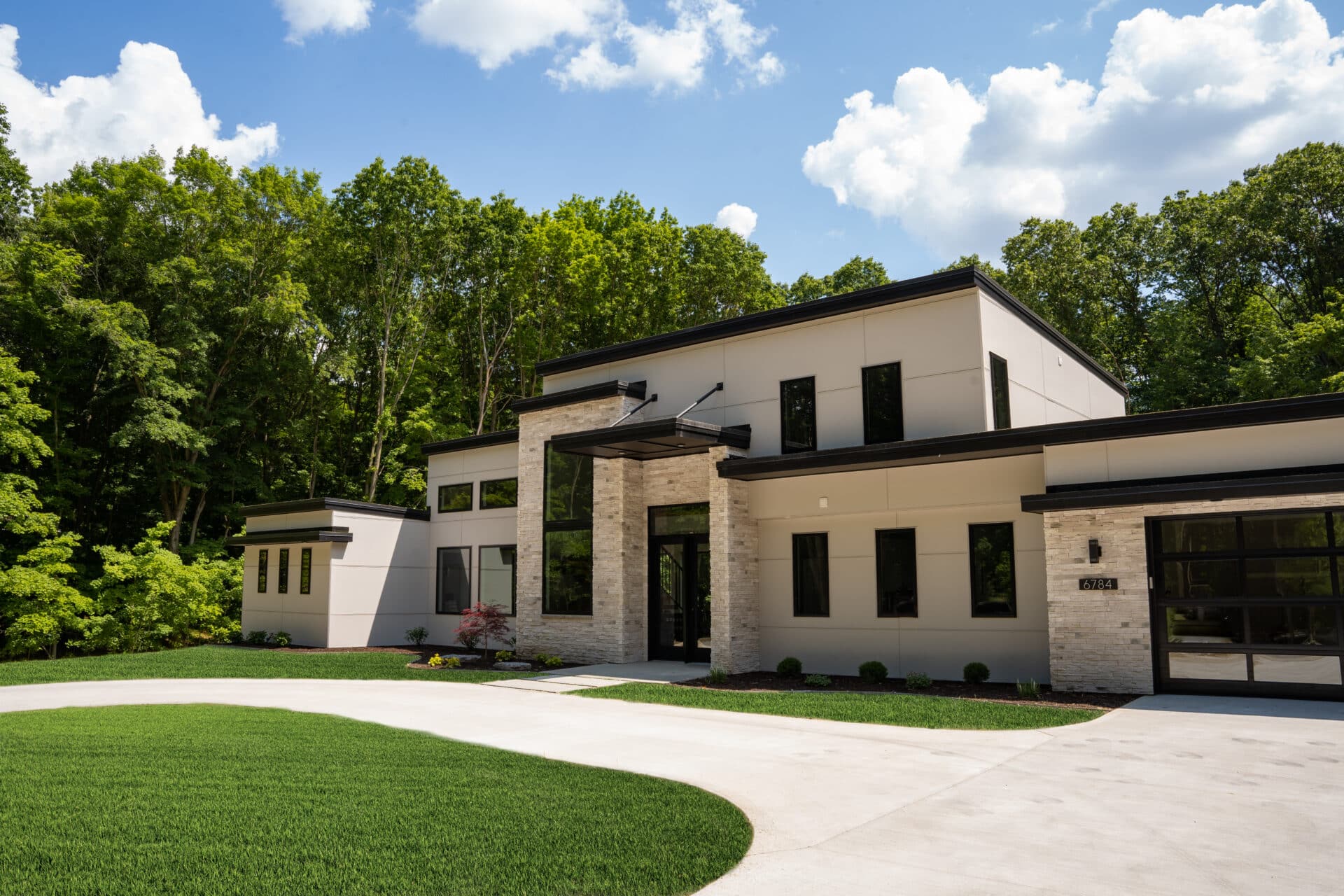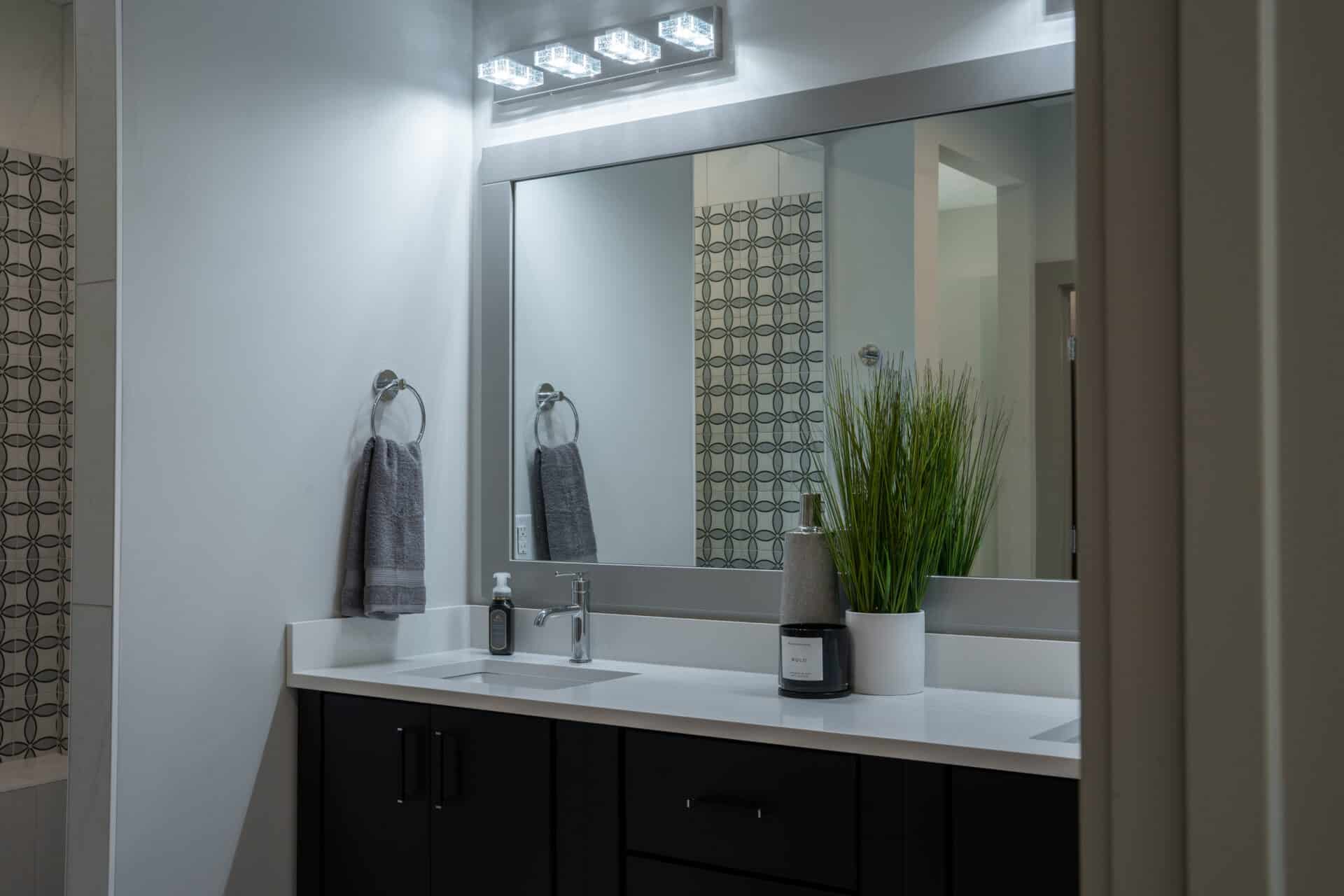

How Long Does It Take To Build A Custom Home?
2023 July 19
Creating a home is more than just a construction project — it’s the culmination of a dream, the forging of a safe haven for your family, and the beginning of a new chapter in your life! While it’s great to be excited about this journey, it’s also crucial to know the timeline of when you can expect to move into your new custom home.
What is the Average Home Construction Timeline?
Building a home isn’t a one-size-fits-all process. Each custom home is a unique endeavor, varying in size, design complexity, and individual homeowner requirements. These factors collectively contribute to the construction timeline. On average, you should anticipate the custom home building process to span anywhere from one to two years.
A construction timeline isn’t set in stone — it’s more of an ebb and flow. Just as every home is unique, so is the journey of its creation. Some parts of the process will progress swiftly, while others might demand more time and attention. Expected and unexpected factors alike can impact the timeline, adding a layer of complexity to the construction process.

Factors That May Affect Your Home Build Timeline
Size and Complexity of Your Home
Just as each person has a unique fingerprint, each home has a unique blueprint. The size of your dream home and the complexity of its features play a pivotal role in the construction timeline.
A larger home, by nature, requires more time to build. When you go through the design process, intricate details and complex features may add to the timeline. But remember, the beauty of a custom home is in these tiny details — they’re the essence of what makes your home truly yours.
Type of Custom Home Build
The type of custom home build you opt for also impacts the timeline. A full custom home, with every facet uniquely designed to your preferences, requires a longer build time compared to a semi-custom home.
In a semi-custom home, certain elements are pre-determined, providing you with a solid foundation that can be customized to your preferences. This approach can notably reduce the pre-construction process, accelerating the overall timeline. Feel free to explore our wide array of custom floor plans to get started: Pick the Perfect Custom Floor Plan.
Mother Nature
Weather, the ever-unpredictable force, can add elements of uncertainty to your home-building timeline. The initial stages of construction, particularly when the foundations are being built, require dry weather. Thankfully, once the roof is in place, the weather’s influence wanes. It’s important to monitor the weather and strategically plan the building stages to minimize any potential delays.
The Plot of Land
The plot of land you choose to build your dream home on can significantly impact the construction process. Factors like topography, soil condition, and any unforeseen issues that crop up once you break ground can all cause delays.
Preparing a plot of land for construction is an essential step that lays the foundation for your home. For a detailed guide on how to select the perfect plot, visit our blog: How to Buy a Plot to Build Your Dream Home. You’ll want to partner with builders focused on meticulous planning and proactive problem-solving, ensuring that you overcome any land-related challenges swiftly and efficiently.

Typical Custom Home Build Timeline
Building a custom home involves a series of intricately planned steps, each one bringing your vision closer to reality. With Eagle Creek Homes, this journey is both transparent and exciting. Let’s walk you through the typical timeline.
Phase 1: Initial Contact and Expectation Setting
Our partnership begins with an open conversation, where we gather an in-depth understanding of your aspirations for your new home. This phase involves defining your needs, preferred custom floor plans, key finishes, and non-negotiables. We’ll also discuss the timeline and budget, ensuring complete transparency from the get-go.
Phase 2: Proposal Presentation and Finalization
Based on our initial discussion, we create an exhaustive proposal presentation. This proposal outlines all necessary elements to construct your home, specific options with respective pricing, and possible allowances.
Once you’ve thoroughly reviewed and approved the proposal, you sign the necessary documents and provide a deposit. The amount depends on whether you’re purchasing a lot from us or we’re building on your existing plot.
Phase 3: Contract Signing and Banking Process
With your approval, we compile the proposals, selected options, and lot cost into a comprehensive building contract. Upon signing this contract, we discuss the draw cycle and initiate the banking process. This process involves gathering financial documents and a final copy of the building plans, among other details.
Phase 4: Preparing for the Build
Following contract signing, we introduce you to the Buildertrend platform, where you can follow your build’s progress. We also connect you with a personal design consultant who will assist you in refining your vision during the selection meeting.
Phase 5: Design Meetings
Now, the real fun begins! During the first design meeting, you’ll select the exterior features, garage and door designs, cabinet layouts, and other custom details. In the second meeting, you’ll finalize your choices for flooring, cabinetry, counters, plumbing fixtures, sinks, backsplashes, tile shower details, and paint.
Phase 6: Finalizing Options and Permit Process
Once your selections are finalized, we update the contract’s pricing if necessary and start the permit process. We ensure every necessary permit is obtained, from building to water and gas hook-ups, driveway installation, soil and erosion inspection, and more.
Phase 7: Pre-Construction Meeting and Foundation Dig
Before the actual construction starts, we organize a pre-construction meeting where you meet your project manager and review all details of the plan, selections, and site survey. Once everything is approved, the construction process begins with the foundation dig.
Phase 8: Framing and Pre-Drywall Orientation
After the foundation is laid, the framing begins. This involves constructing the shell of your home, installing the roof, and wrapping the house. Once the framing is completed, a pre-drywall orientation is conducted where you, accompanied by the project manager, walk through the construction site to understand the electrical, plumbing, and HVAC installations.
Phase 9: Installation of Electrical Fixtures and Appliances
This phase involves installing all the electrical fixtures and appliances. You’ll be responsible for the delivery of these items, but don’t worry, we’ll guide you through the process to ensure a smooth transition.
Phase 10: Customer Walk of Home
As the home nears completion, we invite you to a walk-through of the home. You create a punch list of items that require attention, ask any questions you might have, and learn about the functionality of your new home.
Phase 11: Move-In Day
The final day arrives when all punch list items are taken care of, and your dream home is ready for you to move in. We ensure that all payments are in order and facilitate the move-in process.

Tips to Avoid Delays
There are steps you can take to help expedite your home-building journey, such as maintaining open lines of communication with your builder, adhering to your budget, and choosing the right custom home builder. Let’s review:
Pre-Construction Communication
Nothing encourages a successful home-building process more than effective communication. Engage in a productive and honest pre-construction dialogue with your builder, coming to the table with a prepared list of wants and must-haves.
This open dialogue ensures these desires are incorporated right from the design phase. Modifying your wants after construction begins can slow down the process, and keeping the line of communication open from the start helps prevent this.
Stick to Your Budget
During the excitement of watching your dream home take shape, it can be tempting to tweak your plan, leading to a cascading effect of changes and expenses. However, altering the original blueprint not only puts pressure on your budget but also often triggers delays.
Construction is like a well-orchestrated symphony; one alteration can affect the entire flow. Check out or blog for more tips on setting the right budget for your custom home.
Picking the Right Custom Home Builder
The cornerstone of a seamless home-building process is selecting the right custom home builder. Look for builders who have extensive experience, a well-honed construction process, and glowing reviews.
Previous work, testimonials, and online reviews are valuable tools for assessing a builder’s reputation and credibility. Find out more about this process in our blog on how to choose a custom home builder.
Ready to Start Building?
Building a custom home is a unique, rewarding experience, especially when you partner with Eagle Creek Homes. Our team embraces the values of honesty and open communication, dedicating themselves to keeping your project on time and within budget. We bring years of experience, a passion for craftsmanship, and a commitment to creating spaces that resonate with your lifestyle and personality.
As you prepare to take this exciting step, remember that avoiding delays is easier when you have an experienced, communicative, and committed team by your side. With Eagle Creek Homes, you’re not just getting a builder — you’re gaining a trusted partner who will guide you through every step of this extraordinary journey. Your dream home is waiting, and we’re ready to make it a reality.